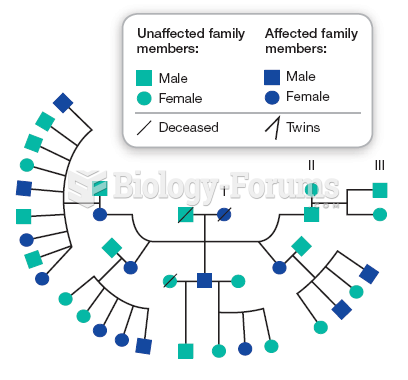|
|
|
Did you know?
Medication errors are three times higher among children and infants than with adults.
Did you know?
After 5 years of being diagnosed with rheumatoid arthritis, one every three patients will no longer be able to work.
Did you know?
Nearly 31 million adults in America have a total cholesterol level that is more than 240 mg per dL.
Did you know?
More than 4.4billion prescriptions were dispensed within the United States in 2016.
Did you know?
There are 60,000 miles of blood vessels in every adult human.







